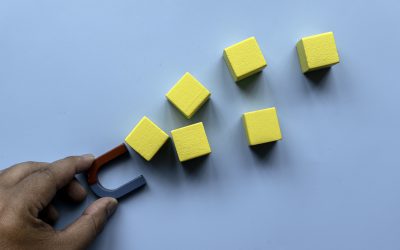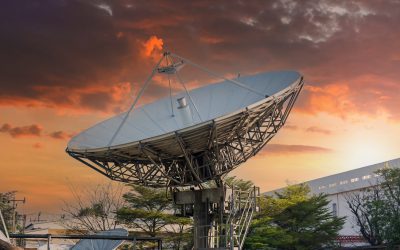In the world of amateur radio, there’s a common thread that binds operators across all frequencies, continents, and decades: the spirit of connection. While we may spend hours at our rigs chasing DX or perfecting antenna builds, the greatest signal strength comes from something more human: building community. At Cranbrook Radio Club Society (CRCS), we believe that local clubs are the heart of amateur radio. Whether you’re newly licensed or a seasoned ham, joining a local club offers benefits that no piece of gear or upgrade can match.
Why Building Community Matters in Amateur Radio
Radio is a solitary hobby—until it isn’t. While many of us enjoy the independence that comes from working the bands alone, the true joy often comes from shared experiences. Building community means:
-
Sharing knowledge
-
Mentoring new operators
-
Participating in events and public service
-
Collaborating on projects
-
Creating lifelong friendships
When you engage with a local amateur radio club, you become part of something larger. You plug into a network of knowledge, experience, and support that enhances your skills and enjoyment of the hobby.
The Role of Local Clubs in Supporting Operators
Local clubs are more than just social groups. They provide structure, resources, and opportunities for amateur radio operators at all levels.
1. Education and Mentorship
Most clubs offer training sessions, license exam prep, and technical workshops. For new hams, the learning curve can be steep. Having an Elmer (experienced mentor) nearby can make all the difference. CRCS regularly hosts workshops on antenna tuning, digital modes, propagation tools, and more.
2. Emergency Communication
Many clubs coordinate with emergency services to provide backup communication during disasters. By joining a club, you gain access to emergency nets, drills, and ARES (Amateur Radio Emergency Service) opportunities. You’ll be prepared to serve your community when it matters most.
3. Group Activities and Events
From Field Day to fox hunts to community outreach, clubs organize engaging events that put your skills to use and help you grow. These experiences foster teamwork, spark friendly competition, and offer a chance to try new operating modes.
4. Access to Equipment and Resources
Some clubs maintain club shacks with high-end gear, towers, and antennas. Others offer loaner equipment or group discounts. This can be especially helpful for operators with limited budgets or living restrictions.
Personal Growth Through Building Community
Being part of a local radio club isn’t just about radio—it’s about growing as a person. Leadership opportunities, event planning, public speaking, and teaching are all part of the club experience. These skills carry over into other areas of life.
As you give back to your club, you become a stronger, more confident operator. Helping others troubleshoot a signal path, guiding a new ham through their first QSO, or organizing a club activation all contribute to personal development.
How to Find and Join a Local Amateur Radio Club
Finding a club near you is easier than ever. Here’s how to get started:
-
Check with National Associations: In Canada, check Radio Amateurs of Canada (RAC). In the U.S., try ARRL’s club search.
-
Search Online: Look for amateur radio clubs in your city or region. Many have websites, Facebook groups, or meetups.
-
Visit Local Repeater Nets: Tune into local nets and introduce yourself. Many club-affiliated nets welcome check-ins from new operators.
-
Attend a Meeting: Most clubs allow visitors to sit in on a meeting or event. This is a great way to see the group dynamic before committing.
When you find the right club, join in! Contribute your time, attend regularly, and volunteer when possible. The more you put in, the more you get out.
Real-World Impact of Radio Clubs
At CRCS, we’ve seen firsthand how building community transforms the hobby. Our members have:
-
Co-built antennas and launched portable stations in remote areas
-
Assisted local emergency services with real-time comms during fire seasons
-
Mentored dozens of new hams into the hobby
-
Run successful license classes, helping the next generation get on the air
This spirit of service and camaraderie reflects the best of amateur radio. It ensures that radio continues to thrive—not just as a technical pursuit, but as a way of connecting people.
Tips for Strengthening Your Club Community
Already part of a local club? Here are a few ways to keep building community and making it better for all:
-
Welcome Newcomers: A smile, a handshake, and an offer to help go a long way.
-
Encourage Inclusivity: Amateur radio is for everyone, regardless of age, gender, or background.
-
Host Hands-On Events: Build nights, soldering clinics, and outdoor activations foster learning and fun.
-
Stay Active Online: Keep your website, email list, and social channels up to date.
-
Celebrate Achievements: Recognize new licensees, contest winners, and volunteers publicly.
The more vibrant and welcoming your club is, the stronger and more resilient it becomes.
The Power of Building Community
Amateur radio is built on curiosity, communication, and care. While the gear and gadgets keep evolving, the foundation remains the same: people coming together to share, learn, and support one another. By joining a local amateur radio club, you’re not just joining a group—you’re joining a tradition.
At Cranbrook Radio Club Society, we’ve seen how building community can amplify not just your signal, but your whole experience in the hobby. Whether you’re logging your first contact or celebrating your 50th year as a ham, your local club is where the heart of ham radio truly lives.
So join in. Reach out. Build community.
We’ll see you on the air.




